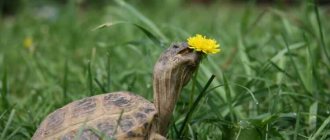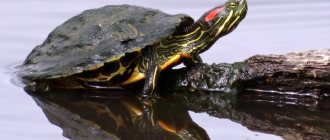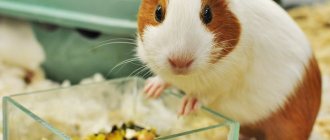Turtles are very cute and easy to keep and care for, making them one of the most popular pets. These creatures steal your heart with their charm and with the right care and environment they can become lifelong friends.
There are many things that are necessary for a healthy and happy turtle tank, including plants.
Turtles prefer live plants because they love to eat them and they also help mimic their natural habitat.
Benefits of Having Live Plants in a Turtle Aquarium
Keeping live plants in a turtle aquarium has several advantages:
Backup filtering
One of the biggest benefits of having live plants in your turtle tank is the ability to filter the water. Living plants can filter out ammonia, nitrates and other organic compounds that are undesirable in the water.
They make the water cleaner, and because they act as a filtration system, they reduce the strain on your aquarium filter.
beauty
Living plants, among which turtles swim, are part of the habitat of these mammals. An aquarium without plants looks unnatural and unattractive to both you and the turtle.
Adding plants to your aquarium will make it look more beautiful and also make it more comfortable for your pet.
Oxygen
Plants release oxygen, and this also happens underwater. Increasing oxygen levels is beneficial for your turtle, especially if you have multiple aquatic pets in your aquarium.
Happy pet
The presence of aquatic plants in a turtle tank will make your pet feel at home.
Turtles eat certain aquatic plants, and if you have them in your tank, they will sometimes eat them and also hide behind them. This makes their maintenance more comfortable and keeps them healthy.
Review of artificial food for aquatic turtles
It is recommended to use dry food not as the main food for aquatic turtles, but as an additional feed that goes well with natural food.
The range of dry food for aquatic turtles includes a large selection of products from different global manufacturers. Let's take a brief overview of the types of artificial food and other healthy treats for pet reptiles.
Complete dry food
Complete dry food can be given to baby and adult turtles every day. This product contains useful components of plant and animal origin, selected taking into account all the requirements of the reptile’s body.
Popular brands:
- Sera;
- "Zooworld";
- Tetra ReptoMin;
- Dajana.
Treats
The “Treats” category includes non-complete foods. They can only be given to adult turtles and no more than once a week.
Popular food treats:
- JBL Tortil;
- Tetra ReptoDelica Snack;
- Sera Raffy Royal;
- Zoomir "Tortilla M" Strong shell, etc.
Vitamin and mineral complexes
At home, turtles cannot receive all the microelements necessary for their body, which they obtain in the natural environment. To ensure that the reptile does not get sick and feels good, it needs to be periodically fed with special vitamin and mineral supplements. You can buy ready-made complexes in pet supply stores.
Vitamin and mineral supplements for turtles:
- MIX – mineral supplement with calcium;
- MIX – general strengthening supplement;
- mineral block "Tortilla";
- Beaphar Turtle Vitamin – vitamin complex;
- FIORY Tarta Vigor – feed additive with vitamins;
- mineral block Ca+D3 “Tortilla M”;
- Sera vitamins;
- Dajana is a mineral stone for aquatic turtles.
Disadvantages of Living Plants in a Turtle Tank
Special care of the substrate
Some aquatic plants require substrate for root growth. If you have this type of plant and have substrate in the tank, you will need to vacuum it regularly to remove feces and food debris. Their accumulation in the substrate can pollute the water and cause illness in the turtle. Turtles will also dig up plants for no reason and you will need to clean up the mess.
Toxic plants
Not all aquatic plants are suitable for turtles. Some of them are poisonous if eaten.
Which aquaterrarium is suitable?
The main criterion when choosing is safety. The beauty of the aquaterrarium should be secondary. Otherwise, you risk purchasing a toxic product that will poison your pet’s health.
The second criterion is suitable size. Based on how tall your turtle breed will grow. As a rule, the “height” of males is up to 17 cm, females – up to 20-21 cm. The reptile should feel free inside and move around without the feeling of limited space. As for the volume of the aquarium, this is at least 100, and preferably 150-200 liters for one individual, and 250 for two. If you take a smaller volume, the water will become polluted faster, and this is fraught with the development of diseases in turtles. The water level in the aquaterrarium should be at least 40 cm in order to change it less often.
If you take a young turtle, it is permissible to plant it in a small aquarium and then replace it with a larger one.
The aquaterrarium must have a lid, otherwise the turtle may decide to go on a journey. But the reptile will not last long without water, so provide a lid to prevent escape and possible death of the pet. If your aquaterrarium does not have a lid, then there should be at least 15-20 cm of reserve above the water level.
Flooded Aquatic Plants for Turtle Aquarium
Eleocharis parvula
First on the list of the best live plants for turtle aquariums is Eleocharis parvula. It is similar to regular lawn grass, the only difference is that lawn grass is not in water.
Eleocharis parvulus forms a good layer of substrate for turtles to walk on comfortably as they move around the tank. Turtles can eat some stuff, but the plant isn't so tasty that they'll level an entire field. Plus, it doesn't require much lighting or CO2, plus it doesn't grow as fast, so it won't take up too much space in the tank.
Anubias barteri
These are slow-growing, broad-leaved plants that are an excellent choice for a turtle aquarium. This is one of the easiest aquatic plants to grow and care for. It is also inexpensive and readily available at pet and aquarium supply stores. Anubias plants do very well in low light, don't care at all about pH, and aren't palatable, so fish and turtles leave them alone.
Anacharis or Fishbreeder (Lagarosiphon major)
It is the most common aquatic plant sold for use in aquariums. Sometimes it takes root at the bottom, and sometimes it floats freely. The long stems are covered with dark green leaves that curl back. It is an excellent oxygenator that grows very easily from cuttings and can withstand very low temperatures. The plant provides good nutrition for turtles.
Java Moss
The real beauty of Java Moss is that it doesn't require much lighting or air. It does well in dull and murky water, which means you can keep it in almost any freshwater aquarium. Java moss is also good for water filtration, which is essential in any turtle tank. Java moss is good because it grows along the substrate, stones, driftwood and other objects in the aquarium. This means that it grows easily almost anywhere, so being eaten is not a big problem, and it is also easy to care for.
Thai fern (Java Fern)
Another good option to consider. Although it needs to be secured with small rocks or driftwood, it makes a great addition to any turtle tank. Just tie it to any bottom surface with fishing line and you'll be fine. Ferns are excellent at removing waste from water, acting as a natural filter. They are not that tasty to the turtle, although they may nibble on them from time to time, but they will not eat the whole plant at once. Additionally, low CO2 levels are not a problem for the plant either. This is a very hardy and easy to care for aquatic plant for any freshwater aquarium.
Common holeweed (Moneywort)
Common hole plant is another great option when looking for live plants. It has a beautiful appearance, which makes the turtle tank more attractive and cozy. Grows straight, with long and tall shoots.
In addition to aesthetic appeal, it serves as a treat for turtles. Hollowweed grows well in the presence of plenty of sunlight and CO2.
Hornwort (Ceratophyllum)
Hornwort is a great addition to a turtle tank. It does not reach the surface, but grows underwater, providing filtration and beauty, and can withstand a variety of water conditions as long as they are not extreme. Turtles will happily eat it, but this is not a problem as it grows quickly. It is not demanding and will survive without any effort on your part.
Red Ludwigia (Red Ludwigia)
The reason many people love red ludwigia is that it is very low maintenance. You will not need to provide it with any special nutrients, lighting or aeration. It will do just fine on its own and will feed on the nutrients in the water. Its ease of care makes this plant the best choice for turtle aquariums.
This is a taller plant, so you will need to add a couple of bushes at different ends of the tank to avoid overcrowding the turtles' basking area. It is also a very fast-growing plant that turtles love. Although turtles can eat a lot of red ludwigia, it grows very quickly so it is replenished in no time.
What to feed baby red-eared turtles
What a little turtle eats determines its future health. The diet of young animals must include seafood. It is useful for armored babies to hunt aquarium fish. Turtles can be given clams and pieces of shrimp, but the food is always served raw. You cannot feed small red-eared turtles with products of plant origin - such food will not bring the desired benefits.
The first year of life of red-eared reptiles is very important for the formation of the skeleton and strong shell. For the healthy development of the body, babies need calcium and vitamin A, which is aimed at renewing skin cells and creating keratinized tissue. The turtles are fed daily, adding bone meal to the portions. In addition to fresh fish, you can purchase combined dry food for young animals at a pet store, after consulting with the seller.
Floating plants for turtle tanks
Floating plants are plants that float on the surface of the water and have roots that extend into the water. They can absorb all the nitrates that your turtle tank produces through the nitrogen cycle.
In addition to absorbing all the waste from the tank, they also help reduce unwanted algae.
Limnobium laevigatum or Amazonian frog duckweed
A beautiful plant with broad leaves, it looks beautiful, has a smooth texture and is quite hardy. This is a really good option for a turtle tank, and an ideal floating plant for beginners.
Water Lettuce
Water lettuce is another great option for your turtle tank. These are floating plants resting on the surface of the water. Their lighting needs will definitely be met due to the fact that they are on the surface and therefore will be able to absorb a large amount of UV rays.
Moreover, turtles love to eat lettuce, and it also provides good shelter. This is a fairly hardy plant that will have no problems surviving in a turtle aquarium environment.
Water Hyacinth
Water hyacinth is also a great floating plant option. Except for its appearance, it is very similar to water lettuce. It floats on the surface of the water, so it easily receives air and light. In addition, it is also a very hardy and resilient plant, so keeping it alive is not a problem.
Turtles love to eat water hyacinth, so it makes a tasty snack. It also looks very beautiful, especially when its flowers bloom.
Reproduction and sexual differences of red-eared turtles
Red-eared slider breeding
Red-eared turtles reach sexual maturity at the age of 4–5 years in captivity and 6–7 years in the wild. Turtles living in terrariums mate without paying much attention to the season, while in nature the mating season takes place from March to July.
Males are generally smaller than females and have a long, thick tail. However, if the red-eared turtles are of different ages, then it is not always possible to determine the sex only by size , in this case the following factors must be taken into account: the male’s eye spot is more pronounced, the claws on the front legs are longer, the lower part of the shell is concave (in the female flat).
The mating process is accompanied by a mating dance. The male approaches the female's head. The female swims forward, and the male swims backward, stroking the female’s chin with his long claws. If the female is not against mating, she accepts these advances, otherwise the male is driven away, even to the point of using physical force.
Pregnancy of a red-eared turtle lasts for 2 months, but the period can be extended if the female cannot find a good place for laying.
To lay a clutch, the female needs to dig a nest on the shore of a reservoir. Interestingly, it can move long distances, up to 1.5 km, in order to find the best place for a nest. The nest has the shape of a jug up to 12 cm deep. Depending on age, red-eared turtles can make up to 6 clutches per year with a total number of 30 eggs (which is from 6 to 11 per clutch). The size of the red-eared turtle egg is about 4 cm. The incubation period lasts for 59 - 150 days, because Hatching time directly depends on temperature. So at temperatures from 22 to 30 ° C, the incubation period ranges from 55 to 80 days. The temperature in the nest directly affects the sex of turtles; females are born at temperatures of 29 °C and above, and males are born at 27 °C and below.
To get out of the egg, newborn red-eared turtles pierce the shell with an egg tooth, which falls off after an hour. All babies have a small pouch on their abdomen with the remains of incubation provisions: when it falls off, it leaves a quickly healing wound.
Plant food
In order to properly maintain reptiles, it is worth including in the menu not only animal food, but also plant food mixtures. Plants can be fed to young and adult individuals, and with age the amount of this food should increase.
When keeping a turtle in an aquarium, the menu must include the following herbal components:
- Various types of grass. Amphibians should be fed plantain, clover, leaves and flowers from dandelions, and rhubarb. Turtles are especially fond of coltsfoot leaves, sprouted grains of oats and barley;
- Reptiles will happily eat plums, banana pulp, pear slices, juicy pitted peaches, mangoes; it is advisable to cut all these fruits into small pieces. You can also give orange, tangerine, pieces of melon pulp;
- Freshwater animals can eat aquarium vegetation. In the aquarium you can plant duckweed, spirogyra, water beetle, and pond algae;
- Vegetables must be included in the menu. The most favorite vegetables include bell peppers, cucumbers, tomatoes, eggplants, zucchini, pumpkin, radishes, celery, legumes, carrot roots, and beets. But white cabbage and other varieties of this vegetable should not be given;
- Once every 7 days, the turtle can be given pieces of mushrooms such as boletus, champignons, and russula.
Important! Is it possible to give reptiles food from the human table (bread, cheese, cottage cheese, sausage, cereals and others)? In no case, it can negatively affect the functioning of the digestive system. Also avoid feeding pet food, citrus peels, and berries with seeds.
Newbie mistakes
Inexperienced turtle owners make mistakes that can harm the health of their pet:
- trying to feed the reptile on land;
- throwing food into the aquarium;
- abuse treats;
- use one type of feed;
- use additives not intended for reptiles.
Owners of red-eared turtles must understand that this is an aquatic reptile that does not feed on land. The diet should be varied, consisting of animal and plant foods. Baby turtles should be fed as predators, adults as omnivores.
We invite you to join our group on VKontakte or Odnoklassniki, where new articles for pet owners are published.
What you need to know before buying
Growing and breeding red-eared turtles in captivity is not difficult, so even beginners can acquire reptiles. However, before purchasing pets, you should learn not only about maintenance issues, but also other nuances. During the winter, these turtles do not hibernate and spend most of their lives in water, so it is important to monitor the cleanliness and parameters of the liquid in the terrarium. When buying tiny reptiles, the owner must understand that the baby will soon grow up and will need a spacious container to keep it, otherwise the turtle will get sick.











